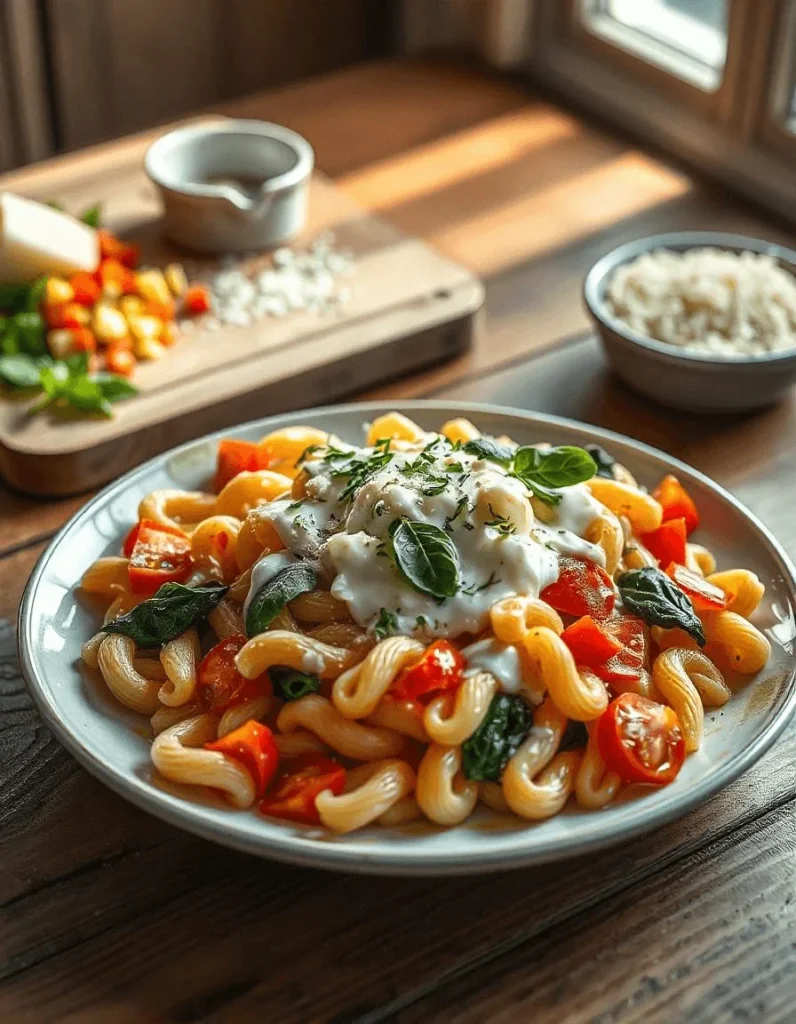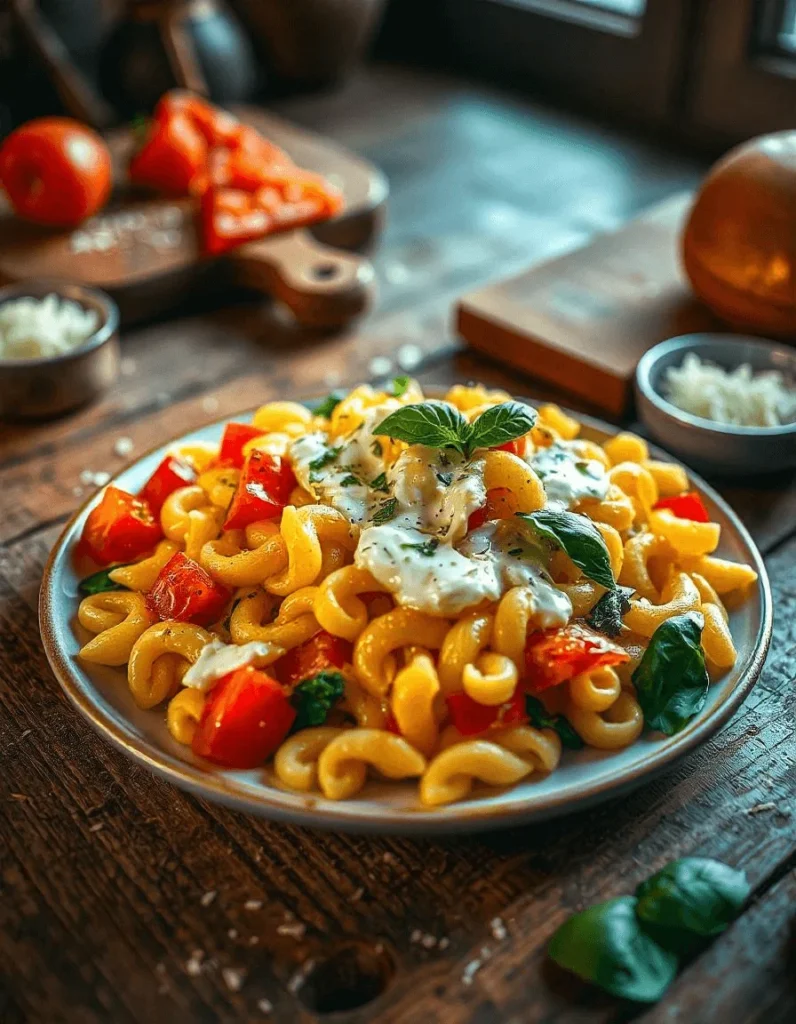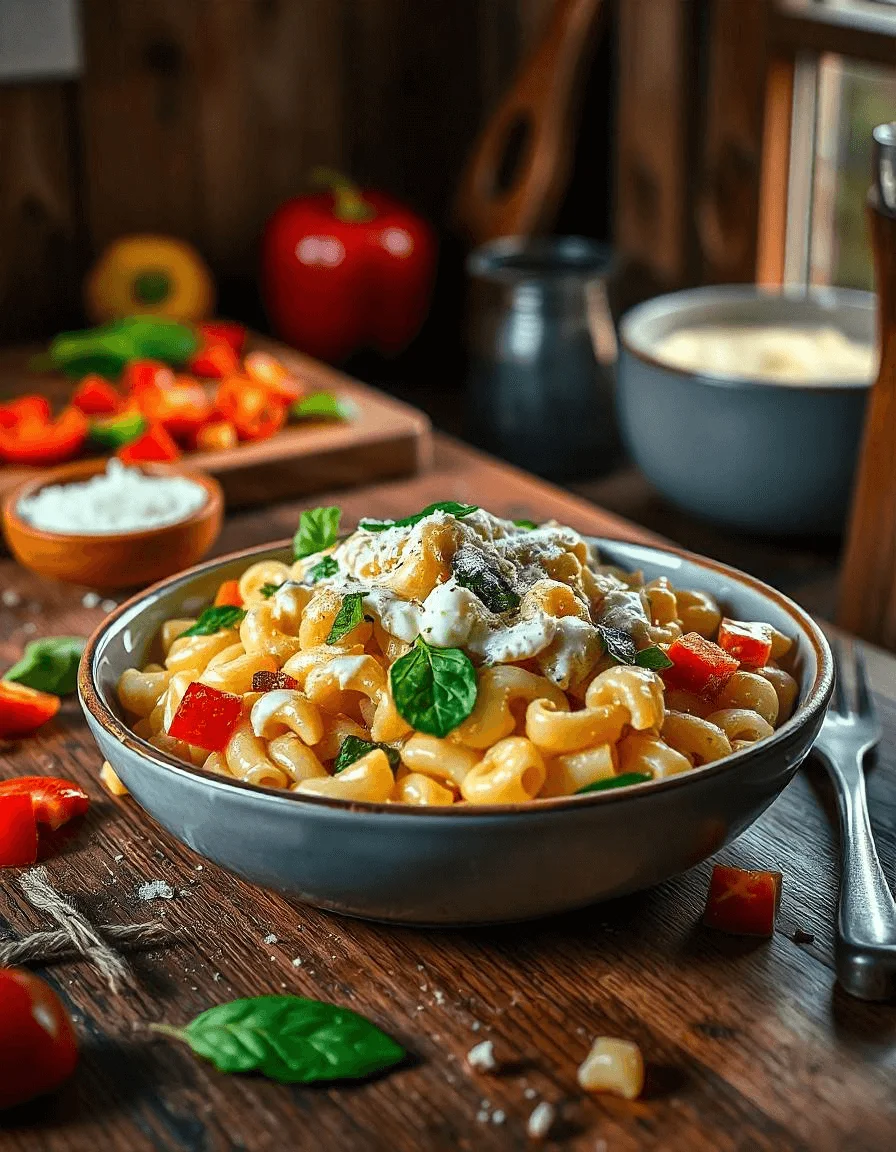Elbow pasta is a popular and versatile pasta shape. Its curved design helps it hold sauces, cheese, and other ingredients. This makes it ideal for dishes like macaroni and cheese, pasta salads, and casseroles. Whether you’re making a classic comfort dish or trying something new, elbow pasta is a great option. In this guide, we’ll show you how to cook it perfectly every time and offer tips to make the most of this kitchen favorite.
The Right Way to Cook Elbow Pasta

Boiling Water: Use Plenty of Water for Even Cooking
When cooking elbow pasta, make sure to use a large amount of water. Add about 4-6 quarts of water for every pound of pasta. This allows the pasta to move freely and prevents it from sticking together. More water keeps the temperature consistent when you add the pasta, helping it cook evenly.
If you use too little water, the pasta will clump together and cook unevenly. A crowded pot will also cause the starch to make the pasta stick. Always bring the water to a rolling boil before adding the pasta. This helps the pasta cook quickly and evenly, giving it the perfect texture.
Adding Salt: Why Salting the Water is Important for Flavor
Salting the water when cooking elbow pasta is a key step to enhance its flavor. The salt dissolves into the water, which allows the pasta to absorb some of the seasoning as it cooks. Without salt, pasta can taste bland, as it will only pick up flavor from the sauce or seasonings added later.
Use about 1-2 tablespoons of salt for every 4-6 quarts of water. This creates a well-seasoned base for your pasta. Make sure to add the salt once the water starts boiling, before adding the pasta. This ensures that the salt is evenly distributed. The salty water helps to bring out the natural flavor of the pasta and gives it a better, more enjoyable taste.
Cooking Time: Typical Cooking Time for Al Dente Pasta (8-10 Minutes)
The cooking time for elbow pasta is crucial for achieving the perfect texture. For al dente pasta meaning firm to the bite cooking time usually ranges from 8 to 10 minutes. However, cooking times can vary depending on the brand and thickness of the pasta, so it’s always a good idea to check the package instructions for guidance.
To ensure you don’t overcook it, start testing the pasta around 8 minutes. Simply take a piece out, let it cool for a moment, and bite into it. If it’s firm but tender, you’ve hit the sweet spot for al dente. If it’s too soft, cook it for an additional minute or two.
Remember, pasta continues to cook slightly even after you drain it, so it’s better to take it off the heat a little earlier than later to avoid overcooking. This approach ensures the pasta maintains its structure and doesn’t become mushy when mixed with sauce.
Draining Tips: How to Drain Properly for Optimal Texture (Don’t Overcook!)
Draining pasta properly is essential to achieving the perfect texture. After your elbow pasta has cooked to al dente, immediately drain it in a colander to stop the cooking process. Avoid letting the pasta sit in hot water too long, as this can cause it to overcook and become mushy.
Don’t rinse the pasta unless you’re making a cold pasta salad. Rinsing removes the starch that helps sauces cling to the pasta, leaving you with a less flavorful dish. For the best results, once drained, toss the pasta lightly with a little olive oil or a splash of pasta cooking water if you plan to mix it with a sauce. This ensures it remains slightly moist and will absorb the sauce better.
By following these simple steps, you’ll maintain the pasta’s firmness and texture, creating the ideal base for any dish.
Essential Tips for Perfect Elbow Pasta
Keep Pasta Al Dente for Best Texture Do a Taste Test to Know When It’s Ready
For the best texture, aim to cook your elbow pasta al dente, which means it should be firm yet tender. This ideal texture gives the pasta a satisfying bite and ensures it won’t become soft or mushy when mixed with sauces.
To check for al dente, taste the pasta a minute or two before the recommended cooking time ends. Take a piece out of the pot and let it cool slightly. Bite into it if it has a slight firmness to the bite without being hard in the center, it’s perfect. If it still feels too firm, cook it for another minute and test again.
Avoid relying only on the timer. Different pasta brands or sizes may have slight variations in cooking time. A taste test gives you the control to cook the pasta to your exact preference, ensuring the best results every time.
Avoid Rinsing Cooked Pasta Unless for Cold Pasta Salads
Rinsing cooked pasta is generally not recommended, as it removes the natural starch that helps sauces cling to the noodles. This starch plays a key role in enhancing flavor and ensuring the sauce adheres smoothly to the pasta. Without it, you may end up with a less flavorful dish and a sauce that slides off the noodles.
The only exception is when making cold pasta salads. In this case, rinsing is useful to stop the cooking process and cool the pasta quickly, ensuring it doesn’t get overcooked. If you do rinse, be sure to drain the pasta well and toss it with a dressing or sauce shortly after to avoid the noodles becoming too dry.
For most hot dishes, however, skip the rinse and simply drain the pasta. This will help you achieve a more cohesive, flavorful meal that holds the sauce perfectly.
Simple Elbow Pasta Recipes to Try
Classic Mac and Cheese: Quick Recipe Suggestion Using Elbow Pasta
Mac and cheese is a comforting and simple dish, and using elbow pasta makes it even more satisfying. Here’s a step-by-step guide to making the perfect creamy mac and cheese:
- Cook the Elbow Pasta:
- Bring a large pot of salted water to a rolling boil.
- Add the elbow pasta and cook it according to the package instructions, usually around 8-10 minutes for al dente.
- Drain the pasta but do not rinse. Set it aside.
- Prepare the Cheese Sauce:
- In a medium saucepan, melt 2 tablespoons of butter over medium heat.
- Stir in 2 tablespoons of flour and cook for about 1 minute until it forms a smooth paste (called a roux).
- Gradually pour in 2 cups of milk, whisking constantly to avoid lumps. Continue cooking and stirring until the mixture thickens, about 5 minutes.
- Add 1 ½ cups of shredded sharp cheddar cheese and stir until melted and smooth. You can also mix in some grated Parmesan for extra flavor.
- Season with salt, pepper, and a pinch of mustard powder for a little zing.
- Combine Pasta and Sauce:
- Add the drained elbow pasta into the cheese sauce and stir until the pasta is fully coated in the creamy mixture. If the sauce feels too thick, add a splash of milk to reach your desired consistency.
- Serve:
- Serve your mac and cheese hot, garnished with a sprinkle of extra cheese or breadcrumbs for added texture.
This classic mac and cheese recipe will be creamy, cheesy, and perfect with elbow pasta! Enjoy this dish as a quick meal or as a comforting side for any dinner.
Easy Pasta Salad: A Refreshing Recipe with Elbow Pasta, Veggies, and a Light Dressing
A pasta salad made with elbow pasta is a perfect dish for hot weather or as a side for any meal. Here’s a simple, refreshing recipe that combines elbow pasta, fresh veggies, and a light, flavorful dressing.
- Cook the Elbow Pasta:
- Bring a large pot of salted water to a boil.
- Add 2 cups of elbow pasta and cook until al dente (about 8-10 minutes).
- Drain the pasta and rinse it with cold water to stop the cooking process. Let it drain completely and set it aside.
- Prepare the Veggies:
- While the pasta cooks, chop 1 cucumber, 1 bell pepper (any color), and 1 cup of cherry tomatoes into bite-sized pieces.
- For added crunch, you can also add ½ cup of diced red onion and a handful of sliced olives.
- Make the Dressing:
- In a small bowl, whisk together ¼ cup of olive oil, 2 tablespoons of red wine vinegar, 1 teaspoon of Dijon mustard, and 1 teaspoon of honey or maple syrup for a touch of sweetness.
- Season with salt, pepper, and a pinch of dried oregano or basil to taste.
- Combine Everything:
- In a large mixing bowl, add the cooled elbow pasta, chopped veggies, and dressing. Toss everything together gently until the pasta is coated and the ingredients are evenly mixed.
- For extra flavor, you can sprinkle some crumbled feta cheese or grated Parmesan on top.
- Chill and Serve:
- Let the pasta salad chill in the fridge for at least 30 minutes before serving. This allows the flavors to meld together.
This easy pasta salad is light, refreshing, and perfect for picnics, barbecues, or meal prep. The combination of crisp veggies and a tangy dressing complements the soft elbow pasta, making it a crowd-pleaser for any occasion.
Storing and Reheating Leftover Elbow Pasta

Storage Tips: How to Keep Leftover Pasta Fresh (Airtight Container, in the Fridge)
Storing leftover pasta correctly ensures it stays fresh and tasty for future meals. Here’s a step-by-step guide to properly storing pasta after cooking:
- Cool the Pasta:
- Allow your leftover pasta to cool down to room temperature before storing it. Don’t leave it out for more than two hours to prevent bacterial growth. For faster cooling, spread the pasta out on a flat surface or large plate.
- Use an Airtight Container:
- Transfer the cooled pasta into an airtight container. This helps to keep the moisture in and prevents the pasta from drying out or absorbing other odors from your fridge.
- If you have leftover pasta mixed with sauce, storing it together is fine, as long as it’s in a sealed container. The sauce helps to keep the pasta from getting too hard.
- Refrigerate Immediately:
- Place the airtight container in the fridge right away. Leftover pasta should be eaten within 3-5 days for the best taste and texture.
- Reheat Gently:
- When you’re ready to eat, reheating is easy. You can warm the pasta in the microwave with a splash of water or sauce to prevent it from drying out. Alternatively, heat it in a pan over low heat, stirring occasionally.
- If the pasta has dried out, adding a little olive oil or a drizzle of broth will help bring it back to life.
By following these storage tips, you can ensure your leftover pasta stays fresh, moist, and delicious for your next meal!
Craving another hearty pasta dish? Check out this Pasta e Fagioli, a comforting, flavor-packed recipe that’s a must-try alongside your favorite pasta creations.
Reheating Method: Warm Up Pasta with a Little Sauce or Water in the Microwave for the Best Taste
Reheating pasta the right way can make all the difference in preserving its flavor and texture. Here’s a clear guide to reheating your pasta in the microwave for the best results:
- Add Moisture:
- When reheating pasta, it’s essential to add moisture to prevent it from becoming dry and tough. Depending on whether your pasta is mixed with sauce or plain, add a small amount of sauce or water.
- For pasta with sauce, add an extra spoonful of sauce to maintain creaminess. For plain pasta, add a tablespoon or two of water or broth.
- Use a Microwave-Safe Dish:
- Transfer your leftover pasta to a microwave-safe dish. Spread it out evenly to ensure uniform heating. A shallow dish works best for even heating.
- Cover the Dish:
- To lock in moisture, cover the dish with a microwave-safe lid or a damp paper towel. This helps prevent the pasta from drying out while it heats up.
- Reheat on Medium Power:
- Heat the pasta on medium power for 1-minute intervals, stirring in between to ensure the heat is distributed evenly. This step helps to prevent the pasta from overheating and becoming rubbery.
- Check the Temperature:
- After about 2-3 minutes, check if the pasta has heated through. Stir and test the temperature. If it’s still cool in some areas, continue reheating for 30-second bursts until the pasta is hot throughout.
By following these steps, you’ll preserve your pasta’s texture and flavor while reheating, ensuring it tastes just as delicious as when it was first made.
For more cooking tips, check out our guide on making perfect diced chicken every time.
Conclusion
In conclusion, cooking and storing elbow pasta correctly ensures the best results in your dishes. Remember these key tips: always use plenty of water for even cooking, season your pasta water with salt to enhance flavor, and keep a close eye on the cooking time to achieve the perfect al dente texture. Once cooked, avoid rinsing and drain the pasta promptly to maintain its ideal consistency.
When storing leftovers, use an airtight container and refrigerate them promptly for up to 3-5 days. Reheat with a little sauce or water to keep your pasta moist and flavorful.
Elbow pasta is a versatile ingredient that can be used in countless recipes. From classic mac and cheese to refreshing pasta salads, feel free to experiment and get creative in the kitchen. Enjoy discovering new ways to use this delicious pasta shape in your next meal!

